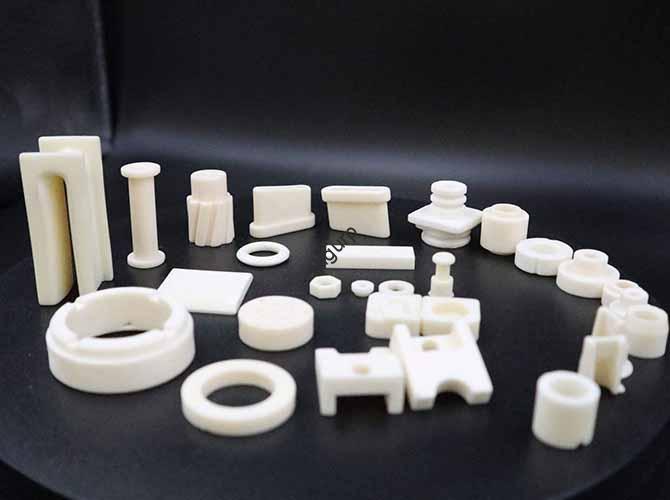Ever looked at a 3D-printed object—like a custom phone case or a medical model—and thought, “I could never do that”? You’re not alone. Many people assume 3D Printing is overly complex, but the truth is: it’s simple to start, but grows deeper as you master it. This guide breaks down the complexity of 3D Printing step by step, so you can decide if it’s right for you.
1. The Basics of 3D Printing: Surprising Simple to Start
If you’re new to3D Printing, you’ll be relieved to know the foundational steps are straightforward—no advanced engineering degree required.
3-Step Beginner Workflow
- Get a 3D Model: Use free design tools (PER ESEMPIO., Tinkercad, which is as easy as dragging shapes) or download pre-made models from sites like Thingiverse.
- Slice the Model: Usa il software di taglio (PER ESEMPIO., Cura, which has pre-set settings for beginners) to convert the model into instructions the printer understands.
- Hit Print: Load the right material (Come Pla, a beginner-friendly plastic), press “start,” and let the printer do the work.
Think of it like making coffee with a pod machine: You don’t need to grind beans or measure water—just pop in a pod and press a button.3D Printing basics are that intuitive.
Per esempio: A hobbyist can print a keychain in 2 hours using a $200 FDM printer, following only 10 minutes of setup. That’s how simple the entry level is.
2. When Does 3D Printing Get Complex? Key Challenges to Know
While beginners can start easily, 3D Printing becomes more complex as you tackle advanced goals. Below are the four main areas where complexity grows—along with how to manage them.
Complexity Breakdown: Beginners vs. Professionisti
| Aspetto | Beginner Level (Semplice) | Professional Level (Complesso) |
|---|---|---|
| Selezione dell'attrezzatura | Choose a pre-assembled FDM printer (PER ESEMPIO., Ender 3) with ready-to-use settings. | Select specialized printers (PER ESEMPIO., SLA for resin models, SLS per parti metalliche) and calibrate advanced parameters. |
| Material Use | Stick to PLA (facile da stampare, no special heating needed). | Work with ABS (requires heated enclosures) or metal powder (needs industrial-grade safety gear). |
| Post-elaborazione | Remove basic support structures with pliers. | Sabbia, colore, or polish parts to meet industry standards (PER ESEMPIO., medical devices need sterile finishing). |
| Design Needs | Use pre-made models or simple Tinkercad designs. | Crea geometrie complesse (PER ESEMPIO., componenti aerospaziali) and optimize for strength/weight. |
Question: Why does this complexity exist?Answer: Because professional fields (like medical or aerospace) have strict rules—e.g., a 3D-printed hip implant must be 100% accurate to avoid patient harm. This requires more skill than printing a hobbyist figurine.
3. Esempi del mondo reale: Complexity in Action
Per capire3D Printing complexity better, let’s look at two real scenarios—one simple, one complex.
Esempio 1: Stampa hobbista (Semplice)
Maria wants a 3D-printed cat figurine for her desk. She:
- Downloads a free cat model from Thingiverse.
- Uses Cura’s “beginner mode” to slice it.
- Prints it with PLA on her Ender 3 printer.Total time: 3 ore (tra cui 10 minutes of setup). No complexity—she didn’t even need to learn design software.
Esempio 2: Medical Model Printing (Complesso)
Dr. Lee needs a 3D model of a patient’s fractured spine to plan surgery. His team:
- Uses a CT scan to create a detailed digital model (requires training in medical design software).
- Chooses a biocompatible resin (needs knowledge of material safety).
- Prints the model on an SLA printer and sterilizes it (follows strict medical guidelines).
- Checks the model’s accuracy with a laser scanner (ensures it matches the patient’s spine exactly).Tempo totale: 2 giorni. The complexity here is necessary to keep the patient safe.
4. Costo & Efficienza: Another Layer of “Complexity”
Many people also worry about3D Printing costs and efficiency—but these are only complex if you don’t plan ahead. Let’s break it down with a simple 因果链 (catena causa-effetto):
- Causa: Beginners use low-cost FDM printers ($200- $ 500) and PLA ($20 per bobina). Effetto: They can print small parts cheaply (PER ESEMPIO., a keychain costs ~$1 in material).
- Causa: Pros use industrial printers ($10,000+) and specialized materials (PER ESEMPIO., metal powder at $500 al kg).Effetto: Costs rise, but the parts are high-value (PER ESEMPIO., a 3D-printed turbine part saves aerospace companies $10,000 in traditional manufacturing costs).
Mito: 3D printing is always slow.Fatto: Per piccoli lotti (1–10 parti), it’s faster than traditional manufacturing. Per la produzione di massa (1,000+ parti), it’s slower—but that’s a limitation, not a complexity.
5. La prospettiva della tecnologia Yigu
Alla tecnologia Yigu, Crediamo3D Printing’s “complexity” is a strength, not a flaw—it lets beginners start simple while pros tackle high-impact projects. We’ve helped small businesses go from basic FDM printing to professional resin models by providing easy-to-follow guides and calibrated equipment. Il nostro consiglio: Start small (print a keychain or phone stand) to build confidence, then gradually take on more complex tasks.3D Printing doesn’t have to be complicated—you just need the right tools to grow at your own pace.
Domande frequenti
- Q: Do I need to learn coding or design to start 3D printing?UN: NO! Beginners can use pre-made models (from sites like Thingiverse) and slicing software with one-click settings. You only need design skills if you want to create custom models.
- Q: How much time does it take to go from beginner to pro in 3D printing?UN: It depends on your goals. Hobbyists can master basic skills in 1–2 months. To work in professional fields (like medical or aerospace), expect 6–12 months of training.
- Q: Is 3D printing too expensive for beginners?UN: NO. Entry-level FDM printers cost $200–$500, and PLA filament is $20–$30 per spool. You can print 10–15 small parts with one spool—making it affordable to practice.
